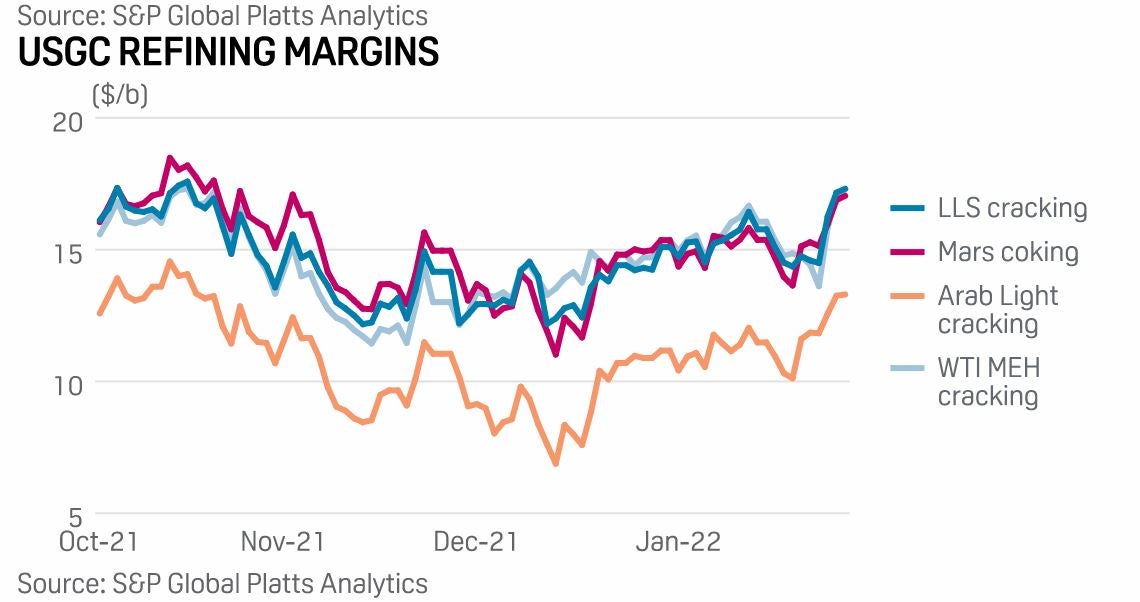Retail diesel prices as measured by the benchmark Department of Energy/Energy Information Administration weekly price are now at their highest level since early August 2014.
The latest increase of 6.6 cents to $3.846 a gallon means that the benchmark used for most fuel surcharges is up 13.4 cents a gallon in just four weeks. Aug. 4, 2014, was the last time the DOE/EIA price was this high.
Ultra low sulfur diesel prices on the CME commodity exchange soared last week from a Monday settlement of $2.6274 up to $2.7855 a gallon. It slid back more than 2 cents Monday but given that the contract for delivery expired that day, and noting that ULSD prices for other months’ delivery were higher, it appears the decline Monday was probably related to traders needing to dump diesel on the final day of trading for February delivery.
The increase in the benchmark diesel price comes as the spread between diesel and crude has been strengthening worldwide. In a report published by Bloomberg, the news agency said the crude-to-diesel spread is at its highest level in Singapore, the Asian trading and oil hub, in more than two years. In the northwest Europe market centered around Rotterdam, Netherlands, the spread is the greatest in 21 months, Bloomberg reported.
On the CME commodity exchange, the strength of diesel can be seen between the price of Brent and that of the ultra low sulfur diesel contract. Just before Christmas, that spread was about 47 cents/gallon. Late last week, it hovered near 65 cts/g, a number that even if crude oil had stayed steady, the widening spread would have helped to push wholesale diesel prices higher, a move that would eventually make it into the retail price.
Diesel markets have tightened in part because refineries have not been operating at higher capacity levels. For example, the weekly DOE/EIA refining report put U.S. refinery utilization at less than 90% through all of January. That is in stark contrast to normal rates during January, which even last year in the pre-vaccination pandemic were more than 90%.
Improved refining margins may be spurring some idled capacity to come back online. For example, S&P Global Platts reported that independent refiner PBF Energy is nearing a restart of capacity at its Paulsboro, New Jersey, refinery that has been closed since the beginning of the pandemic. The company itself has not commented on the report.

Meanwhile, OPEC and its affiliates in the OPEC+ group led by Russia are to meet this week to affirm an additional 400,000-barrel-a-day increase in supply, the amount it has been putting on to the market each month since April. But as Platts noted, discussions will be accompanied by an “elephant in the room”: possible sanctions against Russia should it invade Ukraine.
Benchmark Brent crude rose $13.43 a barrel over the course of January. On CME, it settled at $77.78 a barrel on New Year’s Eve. On Monday, it settled at $91.21. The U.S. crude benchmark, West Texas Intermediate, settled Monday at $88.15 a barrel, its highest level since early October 2014.
More articles by John Kingston
2022 may be pivotal year for California’s green rules for trucks
Public-sector efforts to boost truck parking face path filled with hurdles
Raw component costs send diesel exhaust fluid prices soaring







